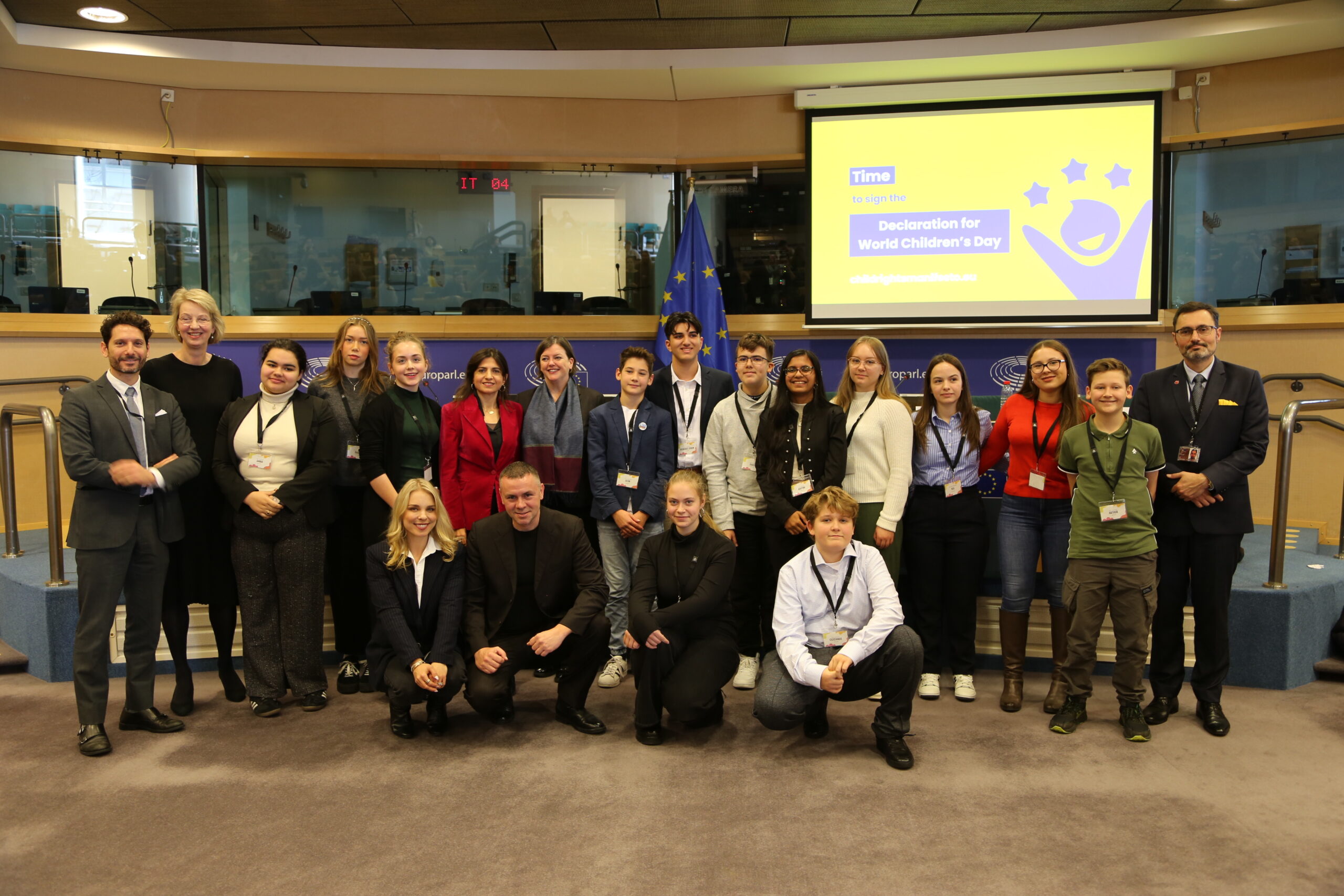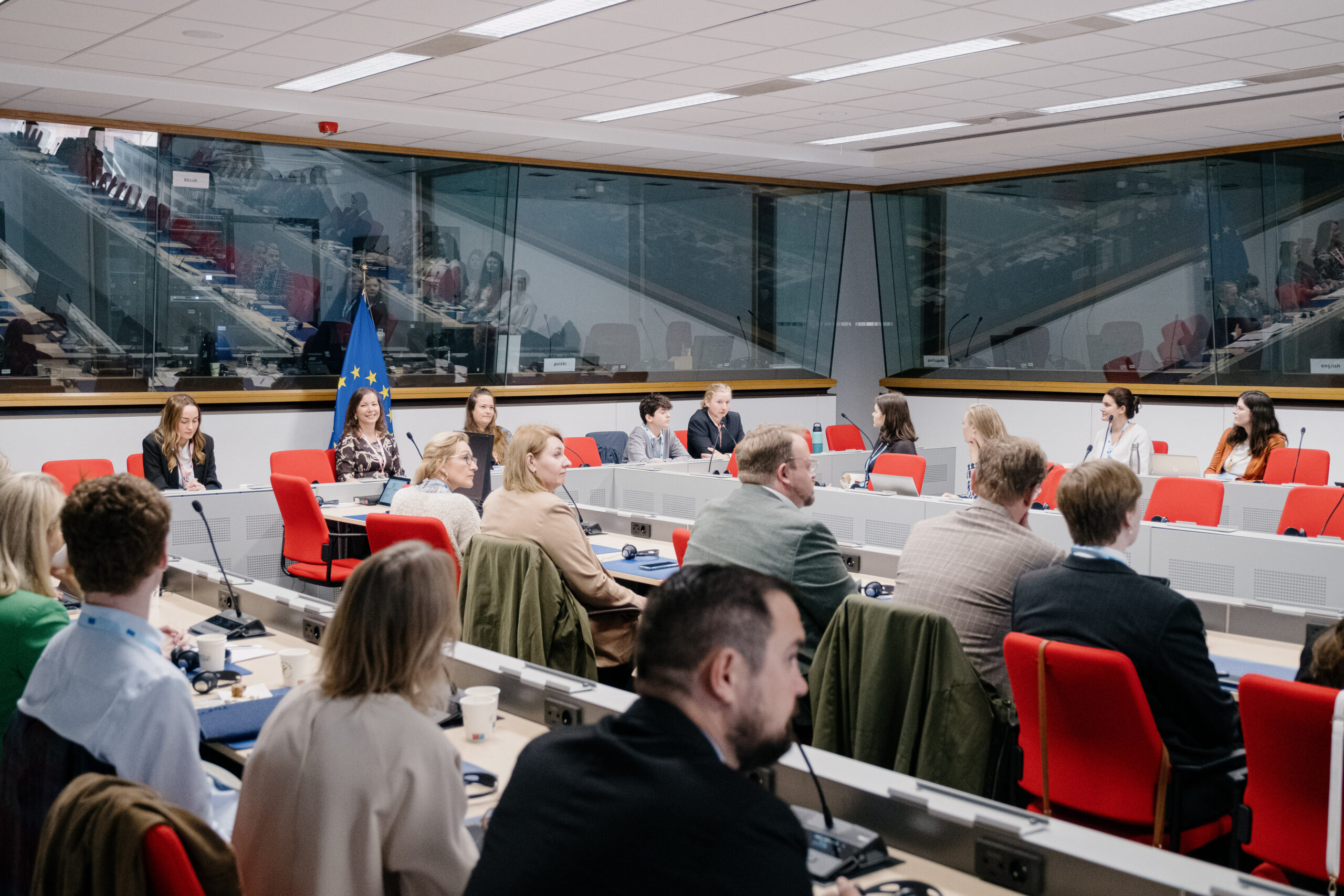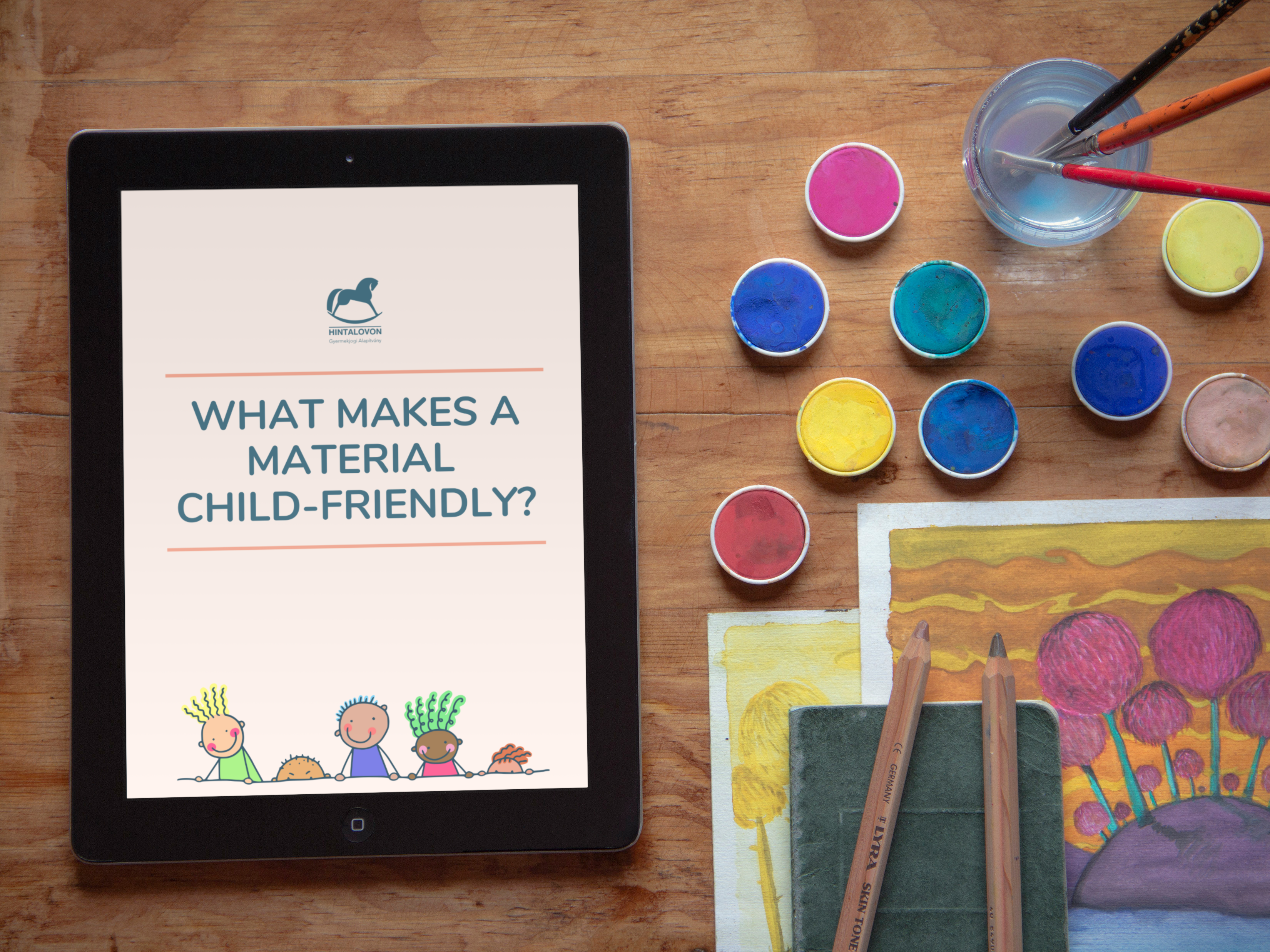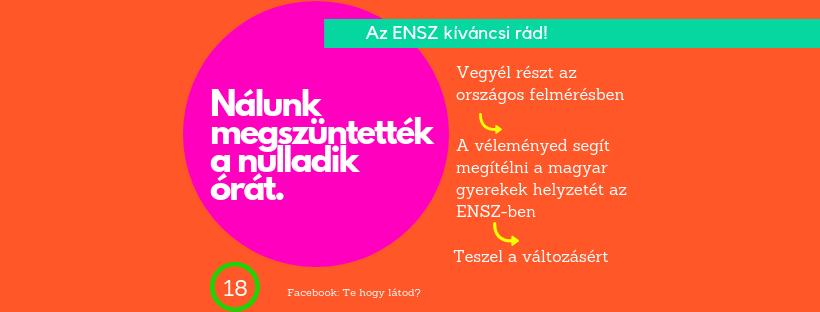What does community-based child safeguarding mean?
Protection from abuse is a fundamental right for all children. In Hungary, all forms of violence against children have been prohibited by law since 2005. It is the responsibility of society as a whole to enforce this law. The family, the circle of friends, the school and other leisure communities, the home environment, the adults around the child on the playground, on the bus, in the stairwell, economic and political decision-makers, in short society as a whole, is responsible for ensuring that children grow up in a dignified way, with respect for their rights. Respect for children’s rights is the responsibility and duty of the whole of society, and it is up to us all to act together, and adult society as a whole to take responsibility for the well-being of children.
What influences how protective a community is?
Children’s safety also depends on their environment and the protective nature of the communities to which they belong. It also depends on how much information they have about abuse, what they consider to be abuse. Where do they get their information? Do they know where to turn to if they experience abuse? Who do they think is responsible for handling these cases? Which communities do they feel more responsible for and which would take stronger actions against violence?
How strong is community-based child safeguarding in Hungary?
To answer this question Hintalovon Child Rights Foundation launched a comprehensive research in the spring of 2021. At the initiative of the Hintalovon Child Rights Foundation, non-profit organisations from four other countries – Albania, Moldova, Romania and Slovakia – participated in the research to gain a comprehensive picture of the perception of child abuse in the region. Child Rights Center Albania, Albania, Concordia, Moldova, Caritas Alba Iulia, Romania, OBČIANSKE ZDRUŽENIE FutuReg, Slovakia were our partner organisation in the research. We present first the Hungarian results.
How was data collected?
The research was composed of three parts: an online questionnaire for adults, a focus group survey of a local community and a three-part online questionnaire for children. The online questionnaire received 10 877 valid responses between 10 March and 15 May 2021. The respondents were over-represented among women and those with tertiary education. Half of them have a minor child and one in three respondents is a professional with children. The focus group survey was carried out in a small town close to the capital, which has both single-family houses and housing estate areas. Here 3 interviews took place between May and June 2021. The first session was attended by child protection professionals, the second by parents, and the third by a mix of the two groups.
Children’s opinions were collected through 3 online questionnaires, which children aged 13-17 could answer between 15 May and 7 July 2021. The first 2 questionnaires asked about specific situations where a child might see or experience abuse. We wanted to know whether or not children would do something in such a situation or tell someone about it later. The third questionnaire was used to look into who children could count on. We received more than 1400 responses to the questionnaires.
RESULTS
How serious is child abuse and neglect in Hungary?
Almost two thirds of respondents (63.5%) believe that child abuse is a very serious problem in Hungary. Slightly less than a third (29.6%) believe that, although it is a cause for concern, there are more serious problems. 69.8% of women think it is a serious problem, while only 42.5% of men are on this opinion.
What is considered abuse?
The research shows that there is a general consensus that sexual abuse, severe physical abuse, and neglect resulting in health symptoms are unacceptable forms of child abuse
There is also a high level of agreement that when a child witnesses domestic abuse, suffers emotional neglect, is hit on the face, head or ears, is threatened with physical punishment and abandonment or sharing intimate photos of the child on social media are also forms of violence. However, many do not consider shaming (calling a child stupid, lazy, etc.) and shouting at a child to be violence.
What do people know about whether they should report if they see violence?
Almost half of the respondents (46.3%) only assume that the law in Hungary requires everyone to report violence against children, while one in every 10 respondents do not even know if such a law exists at all.6 out 10 respondents were aware that a child can report as well.
Majority of respondents ( 84.1%) said that they should report to the child protection services if they encounter violence against children, 65.1% said they should report to the police and 53% said they should report to the medical services as well. (41.8% said they have a duty to report to a parent or guardian, while 40.1% said they should report to the school or kindergarten). The role of local government, NGOs, religious organisations and other relatives and neighbours was less mentioned
According to the respondents, who is responsible for raising a child ?
The majority believe that it is not only the parent’s right to decide how to discipline (79.8%) or raise (67.6%) their child. 9 out of 10 respondents agree that each member of a community is responsible for child protection Adults agree that men and women have equal responsibility for raising children.
Who has the greatest influence on the parent’s discipline method
The spouse or partner (55.2%), parents (29.9%) teachers or other professionals working with children (27.6%), self-help books (22,9)
How acceptable is physical punishment?
9 out of 10 adults believe physical violence is not acceptable even if the parent is upset. According to the majority (83.3%) it is just as bad to hit a boy as a girl. However, there is a significant difference between men’s and women’s opinions on the latter issue. 21.8% of men agree that it is worse to hit a girl than a boy, while only 5% of women think the same.
The majority see physical punishment, the most acceptable in situations where the child’s actions are a danger to themselves: they believe it is legitimate to use physical punishment for example if the child runs across a busy road or steals something. Physical punishment is also seen justified for smoking, drinking alcohol or taking drugs, skipping school.
What if someone else hits our own child?
Adults do not think it is acceptable for a policeman, coach or other adult to hit their child, even if they think it is justified. Those who do, would mostly allow family members and fewer would allow teachers.
Are slaps considered effective?
8 out of 10 adults do not think that slapping or spanking is an effective method of discipline. Adults do not think that hitting a child will stop them from behaving in the same way again, or that shouting and screaming will make children more obedient, nor do they think that psychological punishment would benefit children. At least 80% of the respondents agreed with these statements. However, 1 in 4 adults thought that physical punishment of children is not good but sometimes unavoidable.
How often do respondents think it is that a child is hit or slapped?
According to the respondents 7 in 10 parents discipline their child by shouting and screaming at them, 6 out of 10 parents are thought to use spanking, hitting or slapping, 3 out of 10 parents hit their child with a belt or stick. Positive parenting methods are followed by 4 out of 10 parents according to the respondents.
How would others react when seeing this?
Two thirds of the adult population would ignore if a parent used verbal aggression (shouting screaming) or violence (spanking, hitting, slapping) against a child, saying that it is the parent’s own business.
If a child is beaten with a belt or a stick, the majority would condemn it, because they think it is wrong, while positive methods would be accepted and considered right.
At the same time, a not insignificant minority considers it wrong to never use either physical or psychological punishment (13.8%), and a minority considers it right to shout, scream at a child or shaming them (10.9%). A third of adults say that their environment expects them to intervene immediately and punish a child if he or she misbehaves.
Would they intervene if they saw a child being abused by a parent?
According to respondents, 2 out of 10 adults in Hungary would intervene if they witnessed another parent/adult physically threatening a child. The same number of adults would inform the authorities. Responses suggest that people do not take action against violence mainly because they think it is none of their business (59%), because they are worried about what will happen to them if they talk about it (52.7%) and because they do not want to upset the parents of the children (44.3%).
This was also confirmed by the focus group research. If an adult becomes aware of violence against a child, they want to protect themselves in such situations, fearing that if they do not get the right help, the situation in the family concerned will deteriorate and the child will be in an even worse situation. However, in addition to people’s fears, another obstacle was raised: the malfunctioning of the signalling system.
What is a risk to children’s safety?
Focus group research has confirmed the key role of families in how children behave in their communities. Abuse, ostracism and bullying within peer groups, whether offline or online, is a growing problem. Alcohol and drugs are also particularly dangerous for children. There are clearly identifiable hotspots where children’s safety is at risk. These are mainly near large hypermarkets, where children have easy access to alcohol.
What problems have been identified in child protection?
Parents and professionals who participated in the focus group discussion stressed that child protection is not possible without the cooperation of professionals. This is now sorely lacking, partly due to frequent staff changes. Teachers often do not report, they are difficult to involve in child protection tasks, though the heavy burden and pressure on them is well recognised, but also reports from the general public are very rare. In a small community, where people know each other, it is difficult to keep it a secret who has made the report.
It is also a problem that it is difficult to find the means to provide information about abuse and reporting. It is mainly towards the institutions where the child welfare service can advertise its activities. Traditional forms of information, such as leaflets on the school notice board or in the doctor’s waiting room are unlikely to reach the target audience. Parents’ passivity is also a problem: even when there is a programme, few people are interested in it.
What would help to create safe communities?
Experiences from professionals and parents show that programmes organised and funded by local authorities can make a big contribution to the safety of communities. These should be organised with the involvement of members of the child protection signaling system, PTAs and children. It would be important to ensure regularity. In addition to providing an opportunity for an even wider and deeper dialogue, regularity would also send a reassuring message to parents that the professional network around their children is functioning well, in close cooperation with each other and with them.
Children also have an important role to play in the delivery of programmes, acting as a bridge between professionals and parents. According to professionals, a well-functioning peer support network would be very important in protecting children.
How do children react when they or another child is experiencing violence ? Do they get involved or let it go?
The children’s responses suggest that they are more likely to get involved in an abusive situation (e.g. intervene or speak up) if the perpetrator is familiar to them, if the perpetrator is a peer, if others are present, and if they are witnesses and not victims in a situation. They are less likely to take action if they are the victim, if they are confronted by a stranger or adult, and if no one else is present. They are more likely to get involved in a situation – even with an adult – if they have enough information from parents, teachers or have read about it.
Do kids talk about this with others? Do they get information?
The responses show that information about serious abuse is more accessible to the children (e.g. sexual abuse). They are less aware of everyday situations (verbal aggression in the street, peer bullying). They tend to rely on their sense of justice in these situations.
Why don’t kids get involved or act in a situation?
When they prefer not to get involved in a situation, if it is because they do not attach importance to it. Many children do not dare to get involved, or they do not know what to do.
Would children talk about it if they saw or experienced abuse?
Most children would like to talk about abusive situations. Children would talk about abuse by an adult to other adults, and about abuse by another child to their friends. In cases perceived as criminal offenses, most would turn to an adult, who could “do something in that situation”. They are less likely to seek help from a psychologist or a helpline, mostly in cases, when it was difficult to talk about it.
How do children feel they can rely on their environment?
Half of the children (48,3%) felt that they could count on the support of their environment. They can get help anytime from family, friends or significant others. At the same time, one in every ten children thinks that their environment is not helpful enough. On average, responding children felt more support from their friends than from their family. More children would talk to their friends rather than their family about their problems.












